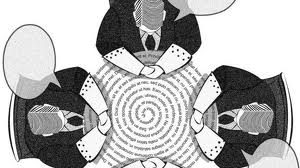 A dominant gene It is the one that expresses its information even if a different form of the gene is present on the homologous chromosome. The dominant gene always determines the physical characteristic that the individual will show.
A dominant gene It is the one that expresses its information even if a different form of the gene is present on the homologous chromosome. The dominant gene always determines the physical characteristic that the individual will show.
Genes contain all the information to create a new individual
The physical characteristics that an individual will have, be it animal or plant, is what is known as phenotype. In the case of humans, the phenotype corresponds to skin color, hair color, eye color, height, earlobe shape, nose shape, etc. The phenotype is what the individual looks like on the outside.
The genotype It is the constitution of the individual from the point of view of his genetics, corresponds to all the information found in your DNA and that it was inherited from their parents. The genotype largely determines the phenotype, however on occasions the phenotype is expressed or not according to characteristics of the environment.
An example of this corresponds to diseases, a person who is the daughter of one or both diabetic parents has a hereditary tendency to suffer from the disease, however if they adopt a healthy lifestyle, carry out regular physical activity, limit their carbohydrate intake and keeps your weight within normality it is very likely that you will not develop the disease even if you are predisposed to it.
Dominant genes and recessive genes
The information contained in DNA is organized into chromosomes, these in turn contain fragments with specific information called genes that are located in certain places on the chromosome called locus, each gene is related to a quality of the individual. Genes that are located on the X and Y sex chromosomes transmit sex-linked characteristics.
When individuals reproduce they contribute half of their genetic information to the new being. This occurs since the chromosomes are in pairs. During reproduction the pairs separate to form the gametes or cells of reproduction, which are the ovules and the sperm. At the time of separation, the chromosomes are located at random, so the genetic information is different between these cells.
Once the chromosomes have been put together in pairs to form the new individual, it happens that there may be different information from each parent about the same trait. Take as an example the color of the eyes, if you receive the gene from the father for the color blue and the gene from the mother for the color brown, it will happen that the dominant gene will be expressed, which in this case is brown eyes. From the phenotype point of view, the new being will have brown eyes, but its genotype has information for brown eyes and blue eyes.
 In this way when there are two genes for the same information, there will be one that will have the ability to hide the other and express itself, it is the dominant gene. The gene that is hidden is called a recessive gene. When two identical genes are inherited, we speak of a homozygous constitution, which can be dominant if two dominant genes are inherited or recessive if two recessive genes are inherited, in the case that two different genes are inherited, one dominant and the other recessive, it occurs heterozygous constitution. For an individual to express a recessive trait, it is necessary that they have a homozygous recessive genetic makeup.
In this way when there are two genes for the same information, there will be one that will have the ability to hide the other and express itself, it is the dominant gene. The gene that is hidden is called a recessive gene. When two identical genes are inherited, we speak of a homozygous constitution, which can be dominant if two dominant genes are inherited or recessive if two recessive genes are inherited, in the case that two different genes are inherited, one dominant and the other recessive, it occurs heterozygous constitution. For an individual to express a recessive trait, it is necessary that they have a homozygous recessive genetic makeup.
In the case of genes located on the X chromosome, they will always be expressed in the male sex since it contains only one chromosome of this type. This explains why inherited disorders such as hemophilia and color blindness are more common in men, it is due to the fact that the genes that transmit these diseases are located on the X chromosome.
Photos: iStock - jian wang / Christopher Futcher









